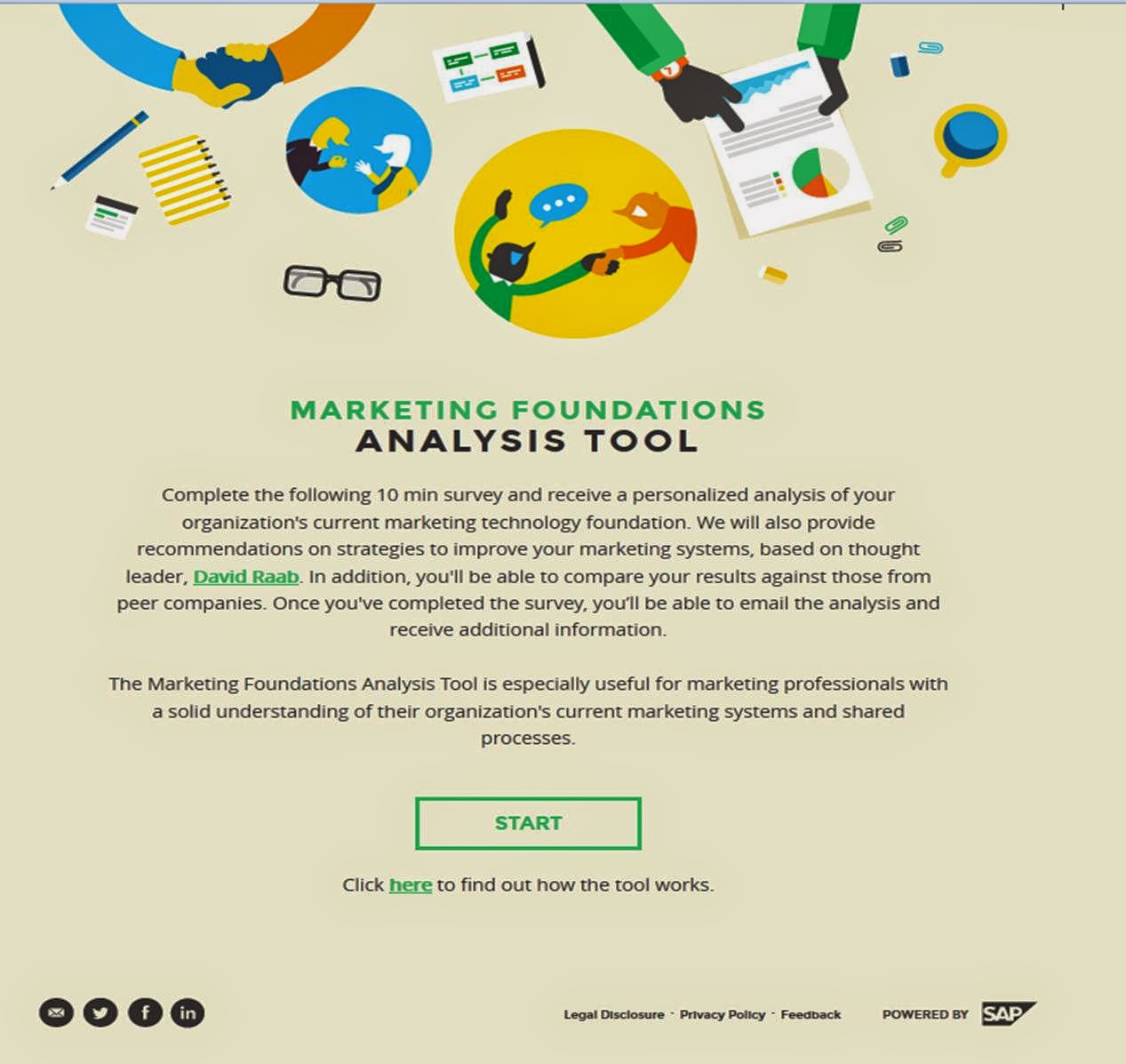Way back in January, I began working with SAP on a set of worksheets to help marketers assess their customer management systems. The much-evolved fruits of that effort were released today as the Marketing Foundations Analysis Tool, a fully automated system that asks users a series of questions about their current systems, marketing programs, and company background, and returns recommendations for system changes and how to manage the transition. Survey-takers will also be shown how their current systems compare with everyone else who answered the questions.
The key insight powering this project was that there are relatively few types of marketing programs and systems. That may not sound very important (or surprising), but it means the problem is simple enough to address with a relatively small amount of user input and business logic. Specifically, it's practical for a survey to ask marketers which programs they want and what their current systems look like. From there, it's fairly easy to specify the system capabilities required to run each program, to aggregate these into a consolidated set of requirements, and to compare the requirements with existing capabilities for a gap analysis. This can be combined with information about the company to generate recommendations for what to do next.
In fact, if anything surprised me during this project, it was how much information could be derived from a relatively small amount of user input. The Analysis Tool asks about:
- nine types of marketing programs, ranging from customer profiling to real time interactions to loyalty programs to marketing measurement. Users specify whether they currently run each program, want to run it in the future, or have no interest.
- thirteen types of customer-facing systems, ranging from email and Web sites to display ads, retail point of sale, and customer account management. These are rated on a spectrum of integration capabilities, from being totally isolated to allowing real time interactions.
- seven types of shared customer data processes, ranging from single customer view to predictive modeling to treatment selection to advanced analytics. Each process is rated on different capabilities, such as calculating scores for predictive modeling and handling unstructured data within the single customer view.
That's it -- just 29 items, although some do have subitems. Based on those inputs, the Analysis Tool produces recommendations covering:
- general architecture (integrated suite, shared customer data platform, or application-based) and change strategy
- industry-specific issues to address, such as regulatory concerns
- opportunities to improve business results by running more marketing programs
- coordinating changes to marketing programs with changes to systems
- changes to customer-facing systems (over-all and whether to keep, enhance, or replace individual systems)
- changes to shared customer data processes (over-all and process-by-process)
That's a lot of information, and it doesn't even include the benchmark comparing your answers to everyone else's. Not bad for free. Thanks, SAP!
So how does this all work? To peel back the covers just a bit, the recommendations are made by first classifying results into general categories such as “few active applications” or “mostly simple systems”, and then applying rules to select pre-written answers. For example, a company with "few active applications" and "many desired applications" is told:
Assessment: Your company is running relatively few current marketing applications but wants to add many more. This could be a challenge given your relatively limited experience.
Recommendation: Prioritize the new applications so you don’t make too many changes at once. Start with applications that require relatively little change but also offer significant rewards. These should add capabilities that will also be used for subsequent new applications. Measure results carefully and prove success before moving on to make more changes.
Obviously I’m biased, but I think that level of advice is specific enough to be useful. It can’t replace the insight of a human analyst who can assess the situation in more detail and may see connections that simple rules will miss. But it certainly provides a starting point for discussions and a base of data to work with. Well worth a ten minute investment of your time.
Again, you can try the tool here. You can take it anonymously and view the results on screen, or give SAP your email and have them send you a copy of the report. Either way, give it a shot and let me know what you think.
Tuesday, September 02, 2014
Subscribe to:
Post Comments (Atom)



No comments:
Post a Comment